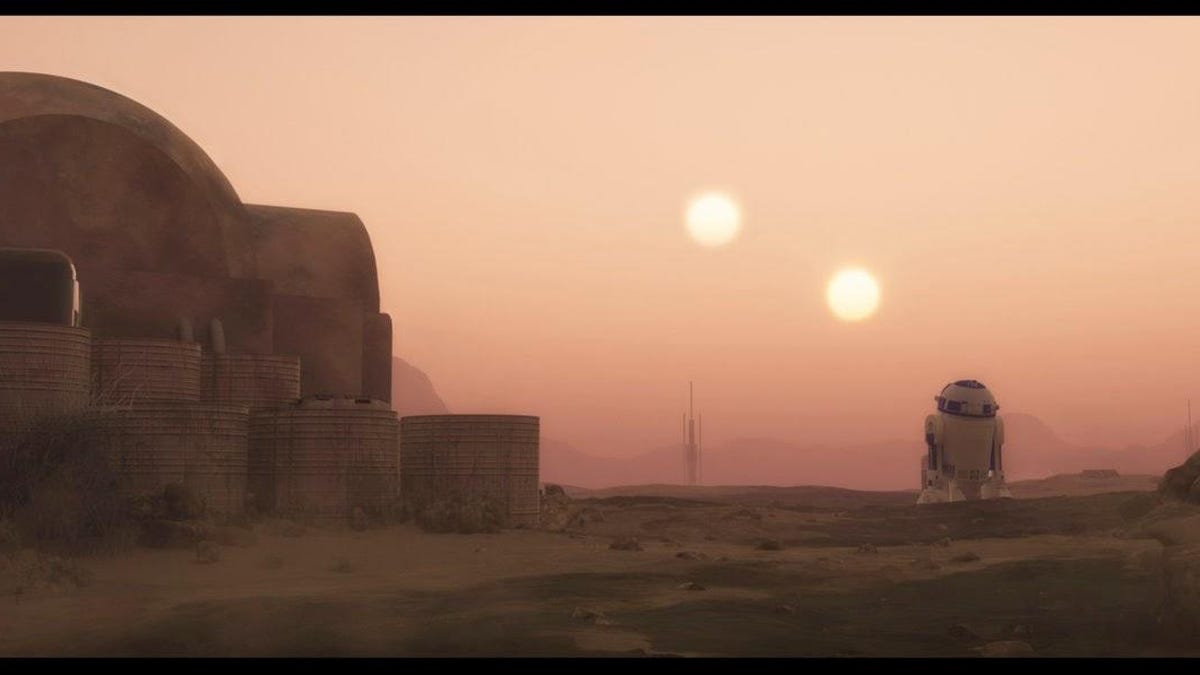Alien hunters might want to look first to planets like Star Wars' Tatooine
Worlds with double sunsets could hold the key to the evolution of complex life in the cosmos, study says.

Tatooine, the classic setting of the early space era film franchise Star Wars.
The classic image of a young Luke Skywalker and his bots watching a double sunset on the fictional planet of Tatooine may not be all that far-fetched. The characters might be made up, but a new study suggests real worlds orbiting binary star systems with two suns are both plentiful and ideal places for alien life to evolve.
Astrophysicists at the Georgia Institute of Technology used a theoretical model of an Earth twin to test how binary star systems affect planetary axis tilts. One of the key ingredients that has allowed complex life to evolve on our planet is that our axial tilt doesn't vary that much through the eons. This keeps the climate relatively stable, allowing life to thrive and evolve from ancient microbes to modern micro-processor dependent primates like you.
Mars, by contrast, has an axial tilt that swings back and forth by up to 50 degrees every few million years, screwing with the red planet's atmosphere and ultimately with life's chances of developing.
We earthlings lucked out because we have a large moon that helps stabilize our axial tilt.
"If we didn't have the moon, Earth's tilt could vary by about 60 degrees," said Georgia Tech research scientist Billy Quarles, in a release. "We'd look maybe like Mars."
But it turns out that placing an Earth twin into a binary system also produces a steady axis tilt like the one we enjoy. The Georgia Tech team's analysis, published Tuesday in the Astrophysical Journal, concludes that 87 percent of exo-Earths we might find in binary solar systems should have steady tilts helping keeping climate stable enough for life to evolve.
What's even more encouraging for the proposition of finding E.T. is that star systems like the one hosting imaginary Tatooine are far from just science fiction.
"Multiple-star systems are common, and about 50 percent of stars have binary companion stars. So, this study can be applied to a large number of solar systems," said assistant professor Gongjie Li, the study's co-investigator along with Quarles.
In other words, our solar system is the relative weirdo in the universe. The arrangement of single stars orbited by multiple planets is more rare than what Luke Skywalker grew up with.
In fact, the nearest star system beyond our own -- Alpha Centauri AB -- is a binary system. Unfortunately, when the researchers added an Earth twin to that system, they found it had a somewhat steady tilt orbiting one of the stars -- Alpha Centauri A -- but not the other. Part of the problem is that A has a very elliptical orbit around B, which wreaked havoc with the dynamics of the theoretical Earth twin in the model.
However, this is likely not the case in most other binary systems, which is good news for the prospect of real Luke Skywalkers out there on distant worlds watching double sunsets.
"In general, the separation between the stars is larger in binary systems, and then the second star has less of an effect on the model of Earth. The planet's own motion dynamics dominate other influences, and obliquity usually has a smaller variation," Li said. "So, this is quite optimistic."

